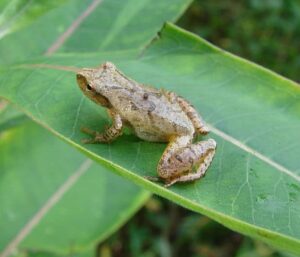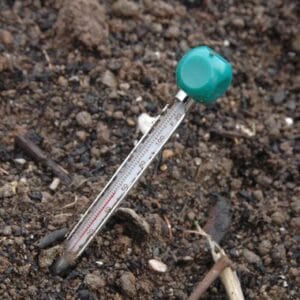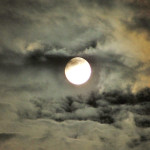Hello fellow readers, Have you ever heard when the peepers are peeping, it’s time to plant peas? Or when dandelions bloom, it’s a cue to dig in potatoes? It’s called phenology –observing animal migrations and when certain insects, amphibians, and hibernating animals emerge. Or the first budding and blooming on different plants as a guide for planting or performing certain garden chores.
They say to plant tomatoes when native flowering dogwood (Cornus florida) is in bloom. Or prune roses and spread corn gluten as a pre-emergent for weed prevention when the forsythia is blooming.
How to practice phenology
You can start practicing phenology by keeping track of what’s happening in your garden, taking note of weather patterns, and observations of nature. Then compare your notes from year to year.
Beyond phenology, there’s a nifty Planting Dates tool to help published by The Old Farmer’s Almanac, which touts a “fairly reliable list.” It’s a chart searchable by zip code, listing when to plant seeds and which seeds to start indoors or out. It’s based on frost dates with a disclaimer that it varies by region. The list also has alternate dates called moon dates.

When peepers peep, it’s time to plant peas. Photo Attribute: Well Tea, CC BY-SA 2.0 via Wikimedia Commons
Planting or gardening by moon’s phases, also called lunar gardening or lunar planting, is a practice as old as agriculture. True, much is a legend, but there are scientific concepts to back it up. For instance, the tides are highest during the new and the full moon. Just as the moon pulls the waves in the oceans, it causes moisture to rise in the earth, encouraging growth.
Planting by the Moon
The cliff notes version of gardening by the moon is to plant vegetables that produce food aboveground and flowers from when the moon is new until it becomes a full moon—called a waxing moon. It’s best to plant root vegetables and flowering bulbs during a waning moon—the day after a full moon until the new moon arrives again. “Old-time farmers swear that this practice results in a larger, tastier harvest, “writes The Old Farmer’s Almanac.
Not only is lunar planting influenced by the moon’s phases, but the astrological signs of the zodiac also impact it. You can check out a previous column titled Planting by the Moon to learn more (link below).
 Soil Temperature is Key
Soil Temperature is Key
No doubt, planting at the right time is as essential as water and nutrients. Perhaps the more precise determination of when to plant is soil temperature. While soil temperature maps are available, using a thermometer to test your soil is the most accurate.
High-tech thermometers provide digital readings that beep when ready, but an analog soil thermometer for less than ten bucks is just as effective. They work much like the human ones, which would be the in-the-bottom variety that Mom, a Registered Nurse, always touted to be most accurate.
Stick the soil thermometer probe into your soil about six inches for a minute or until Mr. High-tech beeps. You can even use an instant-read thermometer made for cooking. Be sure to check your soil temperature midday for at least three days. Average the readings by dividing the total by the number of days taken.
Why taking clues from Mother Nature makes sense
Many seed packets and plant labels provide the optimum soil temperature for planting. Also, seed packs describe how to thin the seedlings once they sprout, so they are correctly spaced and when to harvest your bounty. But frost dates change from year to year, so taking the clues from nature makes sense. Mother Nature, after all, is the ultimate master gardener.
Garden Dilemmas? AskMaryStone@gmail.com (and now on your favorite Podcast App.)
Link to the previous column about Lunar Gardening titled Planting by the Moon.
You’ll enjoy Episode 26 of the Podcast featuring this story:
Earthzine has a nifty article on how to make a phenology chart– a circular journal of what’s going on in nature related to your garden.




